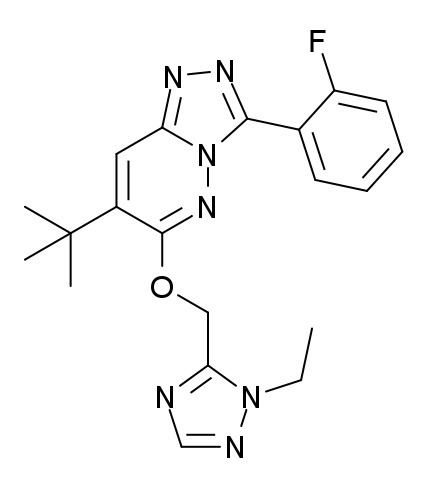Routes ofadministration oral Molar mass 395.432 g/mol | 3D model (Jmol) Interactive image Biological half-life 6.7 hours Formula C20H22FN7O | |
 | ||
TPA-023 is an anxiolytic drug with a novel chemical structure, which is used in scientific research. It has similar effects to benzodiazepine drugs, but is structurally distinct and so is classed as a nonbenzodiazepine anxiolytic. It is a subtype-selective, mixed agonist-antagonist at GABAA receptors, which acts as a partial agonist at the α2 and α3 subtypes, but as a silent antagonist at α1 and α5 subtypes. It has primarily anxiolytic and anticonvulsant effects in animal tests, but with no sedative effects even at 50× the effective anxiolytic dose.
In human trials on healthy volunteers, TPA-023 was comparable to lorazepam, but had much less side effects on cognition, memory, alertness or coordination. In Phase II trials, the compound was significantly superior to placebo without inducing sedation. The clinical development was halted due to preclinical toxicity (cataract) in long term dosing studies. TPA-023 is well absorbed following oral administration and extensively metabolised by the liver, with a half-life of 6.7 hours. The main enzyme involved in its metabolism is CYP3A4, with some contribution by CYP3A5.
